Link building isn’t as simple as publishing, waiting, and swimming in links.
If it was, we’d all have DR90 sites that ranked for immensely difficult keywords.
You need to be proactive. Unless you’re Forbes, which you aren’t, links aren’t just rolling in with every new content piece.
The only problem is figuring out where to start. How to reach those normally unreachable backlinks.
The answer? Link building research.
Here are four research tips and reports you can explore right now to 10x your links.
1. Use the Link Intersect Report to Scout Prime Link Opportunities
One of the most obvious ways to find new link opportunities is to look at competitors.
But simply digging into their backlink profile isn’t always helpful.
You’ll often see a mix of random, one-off links that they got by happenstance.
Pure luck.
Their content was in the right spot at the right time for the right journalist.
The real link building wins come from seeing what websites are linking to multiple competitors or multiple sites in your niche.
Why?
These prospects are primed to link to you, too. They already link to multiple sites just like yours.
And if your content is better (which it probably is), you can quickly leverage this information to build a target list for outreach.
Firing up Ahrefs, open the Link Intersect tool:
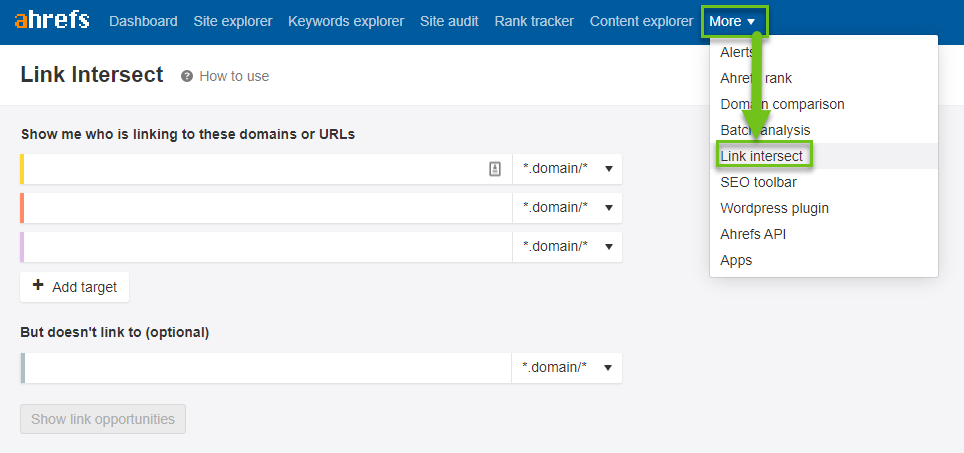
This research tool / report will show you what domains are linking to all of your target sites and not yours.
Start by entering your competitor or niche related sites in the colored bar section:
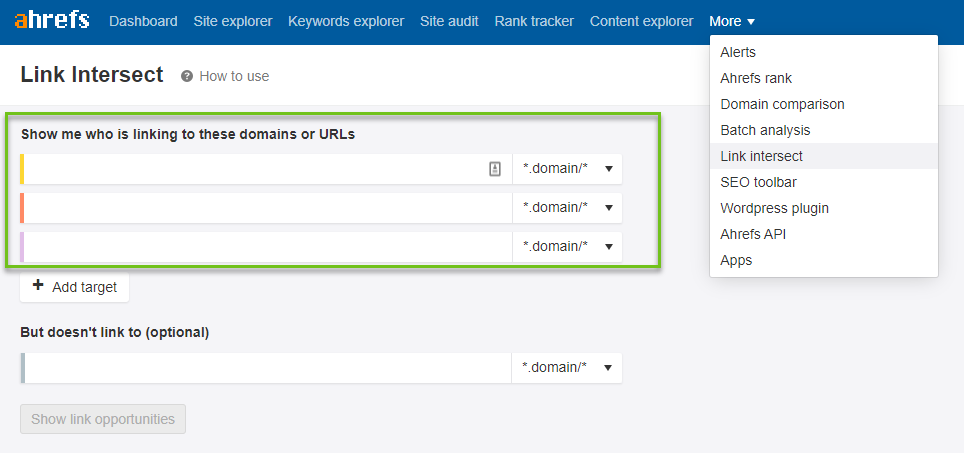
Then, enter your own domain in the “but doesn’t link to” section:
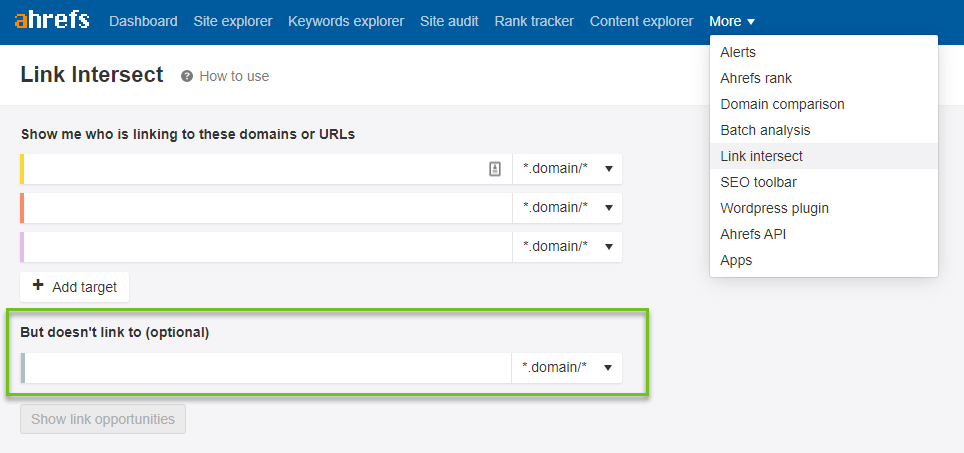
Generate the report to show link opportunities. Here is what your compiled report will show you:
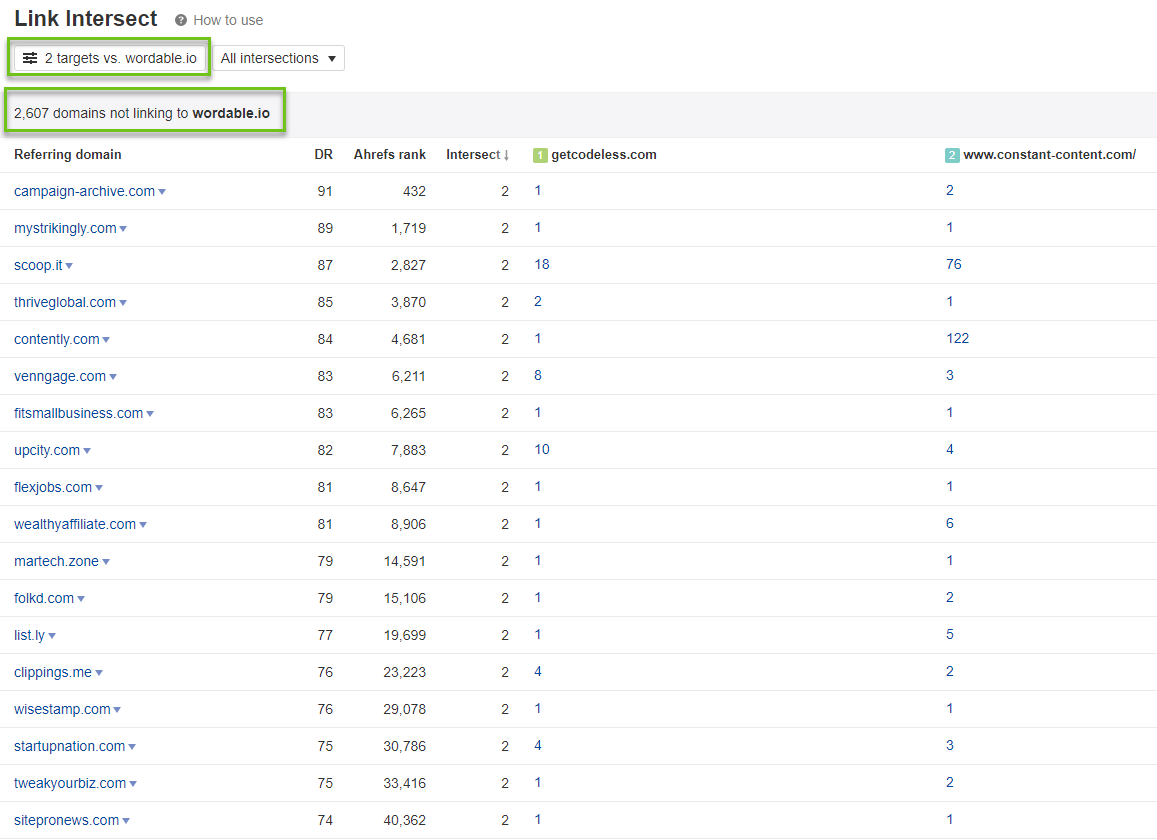
At the top, you are reminded of your two site targets in comparison to your own, and given a total of the domains that link to both competitors and not you.
This is an active list of referring domains that are consistently linking to people in your space.
That’s why this report is so key. These aren’t one-off links.
They are consistent with websites just like yours.
Sort by your target metrics like DR, Ahrefs Rank, or niche relevance, and export the list.
From here, find the right contacts and build a relationship or pitch your content for a link.
2. Hoard Links From SERP Contenders
Links are critical to ranking ahead of competitors in your keyword SERPs.
While not the only factor, it’s a huge factor nonetheless.
If you take identical domain ratings, identical content, and simply change the factor of more, better links, which page do you think will rank higher?
If you aren’t sure where to start with link building research, this report and research method is a fantastic jumping-off point.
To start, head to Google and search for one of your top target keywords that you rank on the second or first page for already.
Compile a list of all of the content URLs in your given SERP that rank below you.
Why below?
- Because you have to start small. If Forbes is ranking above you, emailing the people linking to Forbes and asking them to link to you is likely not going to work just yet.
- Anyone ranking below you likely has inferior content, meaning you can use that as leverage to get their backlinks
Next, head to Ahrefs and one-by-one, start plugging each URL from your list into the site explorer:
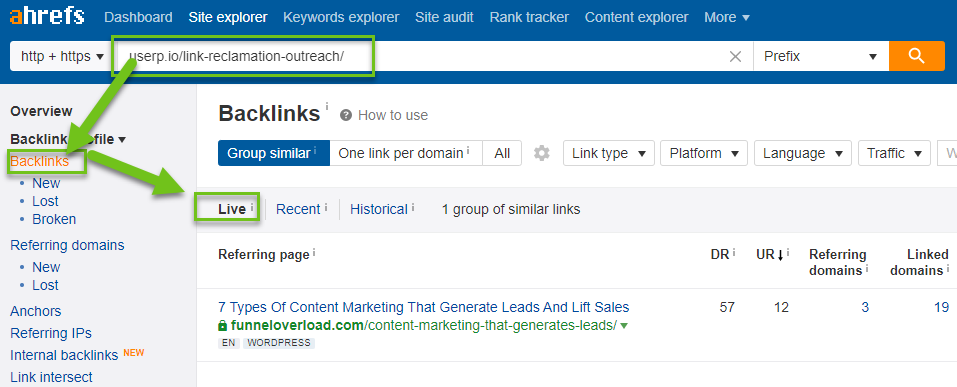
Set a DR minimum of 20-25 to weed out spammy links, and export the list.
From here, conduct research to find emails of each author, and send them a quick note explaining how your content ranks higher, how much more complete and informative it is, etc.
Lastly, sit back and watch the links roll in. Once you start moving up in the SERPs, rinse and repeat.
3. Establish Topic, Keyword, Backlink & Mention Alerts
New content goes live every minute, on millions of different topics.
There are nearly endless opportunities to build favorable, high-impact links on fresh content.
The only problem?
Reaching those writers, bloggers, and journalists before 20 others send them the same old email.
The solution?
Topic and keyword alerts.
This is one of my favorite link building research strategies.
I use Ahrefs Alerts.

…but there are free options, too, like Google Alerts:

Ahrefs Alerts or Google Alerts essentially will ping you via email when blog posts or webpages go live mentioning a specific topic you enter.
For example, you can use this for a multitude of purposes:
Unlinked Brand Mentions
Usually only widely occurring in established brands, your brand might be mentioned in articles without a link.
This is an easy chance to send a quick email and kindly request that they include your website link. The conversion rates are extremely high on this.
Topic Takeover
The topic takeover is one of my favorite link building tactics.
Using Ahrefs or Google Alerts you can be the first to jump on the opportunity before your competition finds it.
Steal Your Competitors’ Brand Mentions
Just like you, your competitors are generating mentions from journalists and high-quality websites.
Enter their brand name in the alerts and see where you can reach out to ask them to include your brand, too.
With Ahrefs, you can enter their domain and receive backlink alerts, too.
4. Scan Your Lost Links for Easy Redemption
Sadly, we all know the pain of losing a great backlink.
Whether it’s due to the removal of an entire post mentioning your website, or a competitor sliding in, link removals hurt both your ego and your domain authority.
Beyond that, the loss of really good links can hurt referral traffic, rankings for content, and more.
The good news is: reclaiming those lost links is easier than acquiring new ones.
Using the Lost Links report on Ahrefs, start by typing in your root domain, and looking at the list:
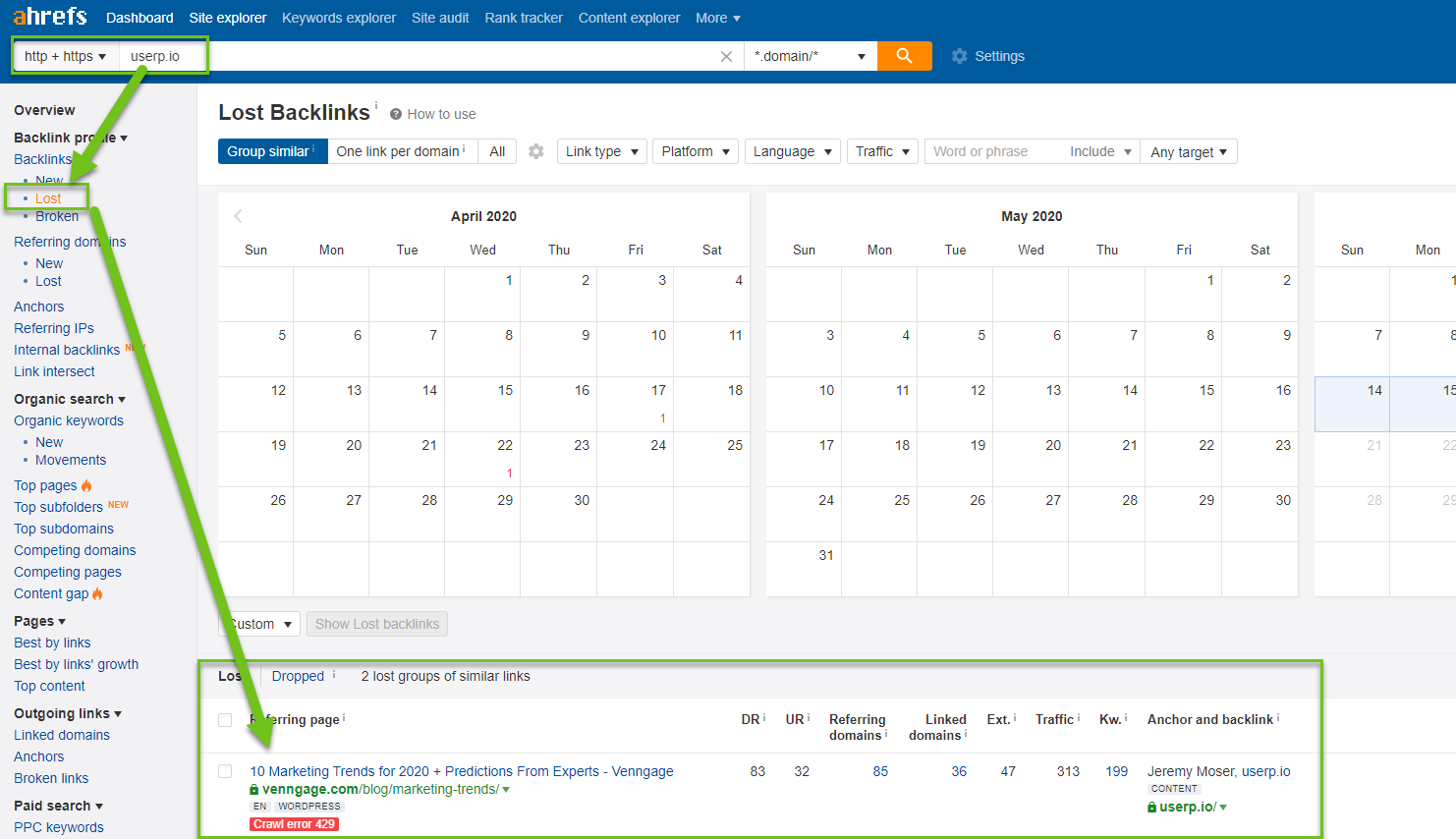
From here, depending on how many links you have lost, you can start sorting by metrics like DR, traffic, and more, to focus on only high-quality links.
You’ll be able to see the exact page and anchor you were previously linked on, making outreach a breeze.
In your email outreach, you have a few options:
- Ask them kindly to place the link back if your example or reference is still there.
- Ask them why they removed your reference / link and how you can improve your content to have them add it back.
Lost links aren’t hopeless.
In fact, they are quite the opposite.
Capitalize on them by using the lost link as a relationship ice-breaker for future collaboration.
Conclusion
Link building research has to be in-depth.
As much as we want links to just “naturally” happen, it’s getting tougher and tougher.
As content expands, grows, and becomes more competitive, so does acquiring top-tier links.
If you aren’t sure where to start, utilize the four reports in this post to kick start your link quest.
More Resources:
- 5 Tips to Run a Sustainable Link Building Campaign
- 11 Ways to Build Links Through Content Marketing
- Link Building Guide: How to Acquire & Earn Links That Boost Your SEO
Image Credits
Screenshots taken by author, June 2020





